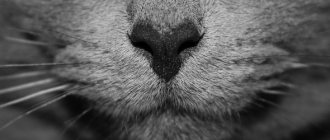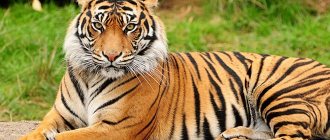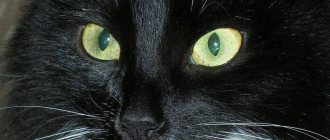If you've ever watched a cat chase a fleeing chipmunk or intensely chase a laser toy, you know that cats are fast creatures. Unless you've ever raced a feline, all you know is that cats run "pretty fast." So how fast do cats run?
Cats can run up to 30 mph (48 km/h), but athletic breeds such as the Bengal and Egyptian Mau are more natural sprinters. Thanks to their flexible spine and sharp claws, cats can run about twice as fast as dogs. However, cats prefer to run in short bursts - approximately 50-100 yards (46-91 m) per burst.
Usain Bolt, the fastest man on Earth, once reached a speed of 27.79 mph (44.7 km/h) while running. But how can a domestic cat match the speed of humans, predators, prey and its distant relatives (the big cats)? To learn more about how fast cats can run, read on!
Indoor and outdoor “runners”
Cats are far from running marathons; they are sprinters by nature.
It is quite logical that cats who live on the street, or who often find themselves there, need good athletic shape. They hunt birds and mice, which are not so easy to catch if you are physically unprepared. And most importantly, they often have to escape from dogs, otherwise they won’t survive. Domestic “fluffies” generally live freely - they only remember hunting as a game, when the owners offer them to catch a toy mouse or a bow on a string. Their bowl is always full, so there is no need to get food for themselves, and in general, the owners take care of everything. And you have to save yourself only from the master’s slipper.
In any case, a cat cannot run at high speed for long. If she does this to escape, she usually climbs a tree or otherwise hides from danger. But, if there is no shelter, then the animal may begin to suffocate and even die, since its heart is not adapted to such stress.
The fastest cats
What helps the fastest cats run
Among purebred cats, the Egyptian Mau is considered the record holder for speed. He was lucky with the structure of his hind legs, which have leathery folds at the base. Due to them, while running, the step reserve and amplitude of movements increase, and therefore the speed increases.
The normal speed of cats (on average) is 13.5-13.8 km/h. If a cat moves at a leisurely trot, then it will barely overtake a walking person, and its speed will be about 8 km/h. Whereas the maximum speed of cats is 50 km/h.
How does running speed depend on breed?
Breeds differ greatly in skeletal structure and physical skills, and how fast domestic cats run will depend on a number of criteria. In particular, the light skeleton and neat physique of the animal will contribute to excellent sprinting qualities.
Thus, the Egyptian Mau is recognized as the fastest breed today, a representative of which set a speed record of 50 km/h. The adaptation of these animals to running is largely due to the folds of skin at the base of the hind legs, which helps increase the amplitude of the jump.
Bobtail cats also have a high running speed. These strong, muscular animals are very active and energetic. But cats with a massive skeleton and not very long legs, for example, Persian cats, are not very well adapted to running, however, they can develop sufficient speed in case of danger.
The fastest cats in the world
Wild cats are fast and agile animals that are excellent hunters. Even a domestic cat can run at a speed of 40 km per hour. The pet will not be able to cover a long distance at this pace. He will be able to make a tiny leap. Wild cats have greater endurance, so they are able to run at high speed for much longer.
When measuring indicators, the distance and time it takes the animal to cover the distance are taken into account. There are many cats in nature that are capable of running with incredibly high agility.
Coyote
The coyote is the fastest predator on earth, excluding felines. These animals belong to the canine family, are small in size and weight, but can accelerate up to 65 kilometers per hour, although most often they run at a speed of about 50 kilometers per hour. They use their speed to hunt hares, marmots, ground squirrels and other small mammals, and sometimes take pheasants.
Sixth place – Puma
The predator runs very quickly over short distances. The animal is capable of reaching speeds of up to 75 km/h. That is, a cougar can even catch up with a car that is not going too fast.
In the United States of America, the cougar is commonly called the “mountain lion.” The name is associated with the animal's habitat. The predator can be found not only in forests, but also in the mountains. Moreover, the puma is found even in the jungle and swamps.
Differs in large sizes. Together with the tail, the body reaches 2 meters in length. At the same time, the weight is not too large - from 50 to 100 kg. Much depends on gender and individual characteristics. Due to its well-developed muscles and light weight, the Puma is able to run quickly and hunt deftly.
Where does he live?
Jaguars are huge and strong cats that live in the forests and meadows of Central and South America. They are the largest animals in the New World. The jaguar's habitat extends from Mexico to Argentina and Paraguay.
Despite its large size, strength and agility, life is not easy for the jaguar. Although in the wild it is at the top of the food chain, it is forced to defend its own territory. The size of such a territory is large - about 100 km. Females have smaller territories than males.
The wild cat is very dangerous and protects its territory in every possible way. She will not let anyone pass by her, so animals and people should beware of meeting her.
READ Pet care aquarium fish food
Jaguars live not only in dark forests, they also live in other areas:
- shroud;
- mountain forests;
- marshy area;
- ocean coast;
- desert.
In hot weather, they prefer to swim in shallow waters, as these animals are considered excellent swimmers. Sometimes they settle very close to the water to catch fish. To catch, they use their tail, dipping it into the water instead of a fishing rod. So, they lure prey.
The population of the species has decreased several times, and in some countries they have been completely exterminated. This is associated with hunting animals, since their skin is highly valued. For this reason, the jaguar is listed in the Red Book. In the wild, life expectancy is 12-15 years, in captivity it is several years longer.
Lifestyle
There are 9 species of jaguars in the world and each of them lives in a different area. One of the Texas species has now been completely exterminated. The most unusual is the black jaguar, which is often confused with a panther. In fact, such an individual has an atypical variant of genetic coloring.
In terms of lifestyle, all species of these predators are very similar. These are nocturnal animals that live alone. Each has its own territory, although a female with several cubs can often be seen. Having matured, they will leave their mother and go to explore new areas, because they prefer to live independently.
With the onset of the mating season, animals can live together. However, there is no specific breeding season for jaguars. During the mating season, predators gather in groups where the female chooses a mate. After that, she leaves the territory and goes to where the male lives. She carries the cubs for 3 months.
Predators necessarily periodically bypass the borders of their territory. Thanks to their high speed, they manage to do this quickly. Sometimes jaguars may overlap, but they react to each other absolutely calmly. When meeting other predator cats, they are hostile.
Animal Jaguar / Jaguar animal
Dune cat
Dune cats have very thick fur and strong, muscular legs. Even the pads are covered with fur to protect cats from the hot sand.
They live in hot, dry areas. These felines prefer to hunt at night. Dune cats have the ability to accelerate to 40 km/h. The main danger for them is from birds of prey and snakes (by the way, they can easily cope with some of them). The peculiarity of this cat is that it can easily do without water, receiving all the necessary fluid from food.
Egyptian Mau
The fastest representatives of domestic cats are considered to be the Egyptian Mau (“Mau” means cat). The maximum record of these miniature darlings is acceleration to 58 km/h (over short distances). All zoologists claim that if these animals had larger dimensions, they could well compete with the cheetah for the title of the fastest animal on the planet.
Leopard
This wild beast can accelerate to 63 km/h. The leopard never hunts on the ground; it catches its prey while in the trees. After the predator has waited for the right moment, it attacks with a sharp jump and, if necessary, catches up with its prey.
Speed is practically not important to them, despite the fact that the number on their “speedometer” is quite impressive - 60 km/h. When a leopard makes a jump, the tail serves as a rudder and helps make maneuvers. Having grabbed the prey, these predators, as a rule, drag it back to the tree and start eating there. They are able to adapt to any terrain. The patterns on a leopard's fur are individual and are never repeated in nature.
The tiger has also long been on the list of the fastest representatives among predatory cats. At short distances, it is capable of reaching speeds of up to 60 km/h. Just imagine that in pursuit of a victim they will be able to jump 5-6 meters in length (and in height, by the way, too).
But, even despite these physical abilities, not every tiger hunt is successful. These cats are very massive, their weight can increase up to 300 kg, and their body length (excluding the tail) can vary up to three meters. That is why, despite their physical dominance, they are significantly inferior to the cheetah in speed.
The puma (or mountain lion) consistently occupies sixth position in the world top of the fastest cats. These predators reach speeds of up to 75 km/h over short distances.
These large animals reach two meters in length (including tail). The weight of these cats reaches 100 kg. A well-developed muscular system and low weight contribute to the speed and agility of mountain lions. They can accelerate to 75 km/h.
Females are smaller in size than males. But, at the same time, they are not inferior to them in agility and speed.
Description of appearance
Jaguars belong to a species of predatory mammals of the cat family. These animals are the largest predators living on the American continent. Among the largest representatives of predatory animals they occupy an honorable third place.
The body of some animals can reach a length of 2 meters. Such specimens are found in the jungles of Brazil. The average weight of a jaguar is 80-90 kg, but there are animals whose weight exceeds 100 kg. Outwardly, they are very similar to leopards, but much larger in size. Males are larger in weight and size than females.
The height at the withers of the predator reaches 80 cm, and the length of the tail is 50-80 cm. This strong, large and agile animal has a smooth-haired skin. The fur is short and the head has rounded ears. The structure of the skull is very similar to tigers. The color of the animal can be very diverse. Typically, the coat color is dominated by shades of rich red and sandy tones. The lower part of the body and soles are white. The entire body is decorated with dark spots.
These cats have well-developed all senses:
- amazing hearing;
- sharp vision.
The jaguar's whiskers are the main organ of touch. Thanks to this, the animal moves almost silently at night in the jungle.
The black jaguar is also common in nature. In appearance, this cat is one of the most beautiful in this family. The weight of a black jaguar can reach 120 kg, and the length of its tail is up to 1 meter. It fascinates with its beauty, so local residents believe that the black jaguar is endowed with hypnosis. These jaguar cats are often confused with panthers. They prefer wild spaces. The panther jaguar loves to live in tropical forests.
Snow Leopard
This top is completed by the snow leopard. They are capable of jumping over a distance of 6-7 meters (the height of the jump reaches 3 meters). The leopard has short, but muscular and strong legs and a fairly long tail, which is necessary to maintain balance during a sprint. By the way, the maximum speed of this representative of the cat family can reach 80 km/h. The snow leopard is the highest mountain animal among all the inhabitants on the planet.
The first position in the ranking is still occupied by the cheetah. This spotted hunter is capable of reaching a speed of 112 km/h. in just 3 seconds. The maximum speed reaches 130 km/h. The length of one jump of this predatory cat can reach 7-8 meters. In addition, the cheetah is able to change the trajectory of its movement almost at lightning speed. That is why the victim has virtually no chance to escape the attack.
Sources:
https://zen.yandex.ru/media/id/592edbdf7ddde8b70fb1be78/5d50fdcda06eaf00ada8abb4 https://kipmu.ru/samye-bystrye-koshki-v-mire/ https://prokyr.ru/info/top-6-samyh -bystryh-kosek-v-mire-47297/
Cheetah | Speed up to km/h
The cheetah is the fastest cat, possessing not only the fastest speed of any feline, but of all animals in the world! In just three seconds, a cheetah can run up to 112 km/h. The maximum take-off run over short distances is 130 km/h. He has a slender, graceful body and well-developed muscles. The large predator has practically no fat layer, and its weight, despite its dimensions, reaches a maximum of only 65 kilograms. It is his aerodynamic body structure that allows him to develop such speed. During the maximum run, this predator’s breathing rate develops up to 150 times per minute. In addition, the cheetah is able to change the direction of its run with lightning speed. Thus, the hunter's prey has virtually no chance of survival.
121 9











